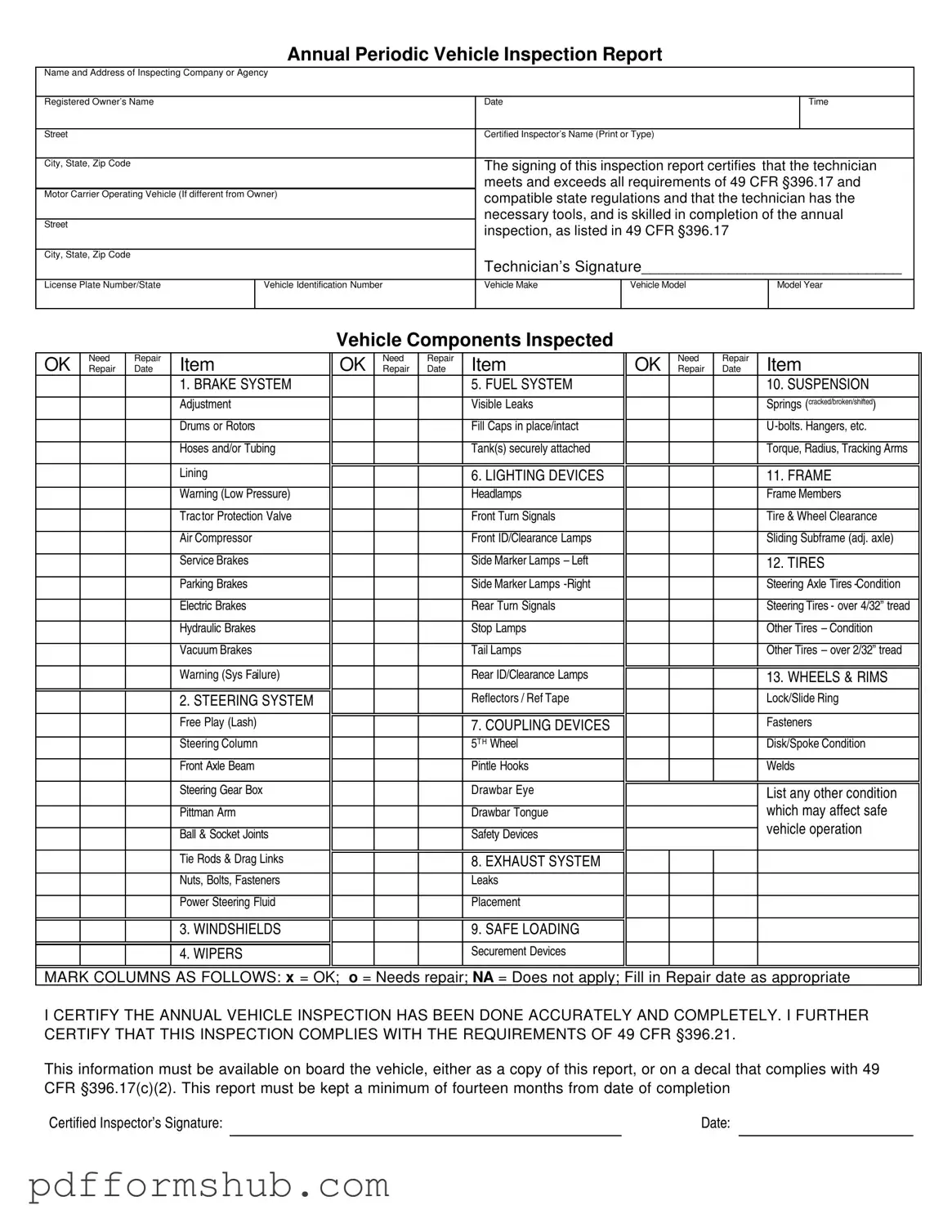The DOT Vehicle Inspection form is an essential document for ensuring the safety and compliance of commercial vehicles on the road. This form serves multiple purposes, including documenting the annual periodic inspection of a vehicle, certifying that the inspection meets federal and state regulations, and providing a record of the vehicle's condition. Key elements of the form include the name and address of the inspecting company, the registered owner's details, and the signature of a certified inspector who has met the qualifications outlined in federal regulations. The inspection report covers various vehicle components such as the brake system, steering system, lighting devices, tires, and more, indicating whether each item is in good condition or requires repair. Additionally, the form captures the technician's qualifications, ensuring that only skilled individuals perform these critical inspections. This report must be kept on board the vehicle for a minimum of fourteen months, either as a copy or on a compliant decal, emphasizing the importance of maintaining accurate records for safety and regulatory purposes.
